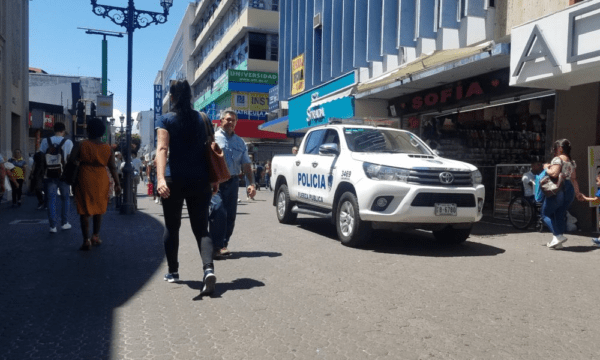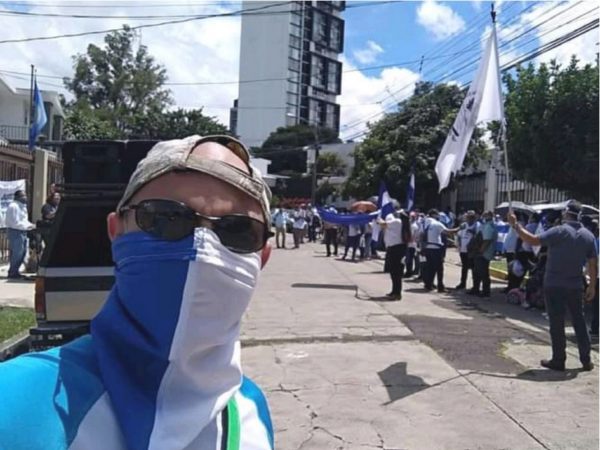Nicaraguans Exiled in Costa Rica Consider Fleeing Again
…to other countries due to the Ortega regime’s persecution

Some Nicaraguans in Costa Rica, fearing for their safety after attacks on several compatriots, now seek protection in third countries.
HAVANA TIMES – The growing harassment, including recent attacks on young Nicaraguans exiled in Costa Rica, has led a number of exiles to flee once more. They’re now seeking refuge in third countries, for fear of becoming victims of what they allege are henchmen sent by the regime of Daniel Ortega and Rosario Murillo.
Authorities from Costa Rica’s Organization of Judicial Investigation assure that the attacks against several Nicaraguan exiles are under investigation. However, attacks such as the one against Joao Maldonado on September 11th have sparked fear among many young people. Many of these youth fled Nicaragua when their participation in the April 2018 popular uprising sparked a witch-hunt by the Nicaraguan presidential couple, targeting those who rose up against their government.
At least seven young Nicaraguans left Costa Rica in the first half of October, and others are on the verge of leaving the neighboring country for fear of suffering attack from unknown sources. They fear that these attacks are coming from minions on the payroll of the Ortega-Murillo dictatorship. The Nicaraguan exiles have publicly denounced the attacks and demand a full investigation on the part of the Costa Rican authorities.
“I left Costa Rica this week, and I’m now seeking asylum in Germany for fear of falling victim to attacks. Many of those of us who are exiled are convinced that the recent attacks are coming from the regime’s henchmen,” stated Walter Ubau. The youth is already in that European country, hoping to be granted political asylum.
Ubau, a cousin of journalist Lucia Pineda Ubau, stated that Costa Rica is no longer safe for the Nicaraguan political exiles. “For that reason, many of us are opting to leave for third countries, to safeguard our lives and that of our families. I made the decision to leave that country and am now in Germany,” he repeated.
Ubau is originally from Managua, Nicaragua. He affirms that he left Nicaragua on his bicycle in 2018, and in that way arrived in Costa Rica. In order to survive in the neighboring country, he’s worked passing out flyers, doing advertising on a tricycle and driving Uber.

Another youth from Sebaco, Matagalpa, said she left Nicaragua after being threatened and pursued by paramilitary and police for having participated in the 2018 protest marches against the regime. She fled to Costa Rica to safeguard her life and that of her family.
“The government [of Daniel Ortega] has been sending paramilitary to make attempts on our lives, and that’s why I’m heading for a third country,” noted the young woman, who asked to remain anonymous for fear of endangering her family back in Nicaragua.
Yet another young Nicaraguan, originally from the municipality of Palacaguina in the northern Madriz department, indicated that she was persecuted by the Nicaraguan regime for having participated in the protests that began in April 2018. That’s why she originally decided to go into exile in Costa Rica. “Now, I’m making the decision to leave for a third country out of fear. The Sandinista Front has sent paramilitary to infiltrate Costa Rica and kill us or do something to us, so my family and I made the decision to go to another, safer, country,” she stated.
These and similar Nicaraguans interviewed in Costa Rica all coincided in the view that there are many young people preparing to leave Costa Rica and seek asylum in countries such as Panama, Guatemala, Mexico, the U.S., Spain, England, or Germany. They’re working with the help of other exiled Nicaraguans who already exiled in those countries.
Wendy Quintero, from the “Nicaragua Nunca + [Never again] Homan Rights Collective, stated that they’ve urged the Costa Rican government to undertake an exhaustive investigation of the recent attacks on Joao Maldonado and on Rayza Hope. They want the Costa Rican authorities to clarify the facts of these attacks, as well as other assaults and crimes against the Nicaraguan exiles, in order to clarify who is responsible for these occurrences.
“The competent authorities of this country [Costa Rica] have an obligation to clarify all doubts on the circumstances and motivations,” she stated.
“We encourage exiled Nicaraguans [in Costa Rica] to make any needed denunciations to the Costa Rican government. The offices of our Collective continue receiving denunciations of human rights violations against the exiled Nicaraguans,” concluded Quintero of the “Nicaragua Nunca +”Human Rights Collective.
Other Nicaraguans continue leaving
Investigations realized by several independent journalists in northwestern Nicaragua revealed a silent but massive emigration of youth from that area. In the municipality of Palacaguina in Madriz department, some 50 young people recently left their communities and neighborhoods with intentions of reaching Costa Rica in search of opportunities to work. Palacaguina is merely one municipality among nine in the department; the pattern continues throughout the area.
The exodus has been motivated by the lack of employment, added to the political and social instability that began with the widespread anti-government uprising in 2018. Since then, things have only worsened. Today, Nicaragua is close to concluding an electoral process that many consider already corrupted and stacked in favor of a government intent on holding onto power.
In another Madriz township – San Juan del Rio Coco – in the coffee growing zone, many young people have left their homes and headed for neighboring countries such as El Salvador and Costa Rica. Coffee producers from the area have expressed their fears that the flight of these youth will affect the next coffee harvest, from December 2021 – February 2022, since the harvest depends on a large labor force.
Meanwhile, in the townships of Quilali and Murra from the neighboring department of Nueva Segovia, there are some communities where almost no young people can be seen in the activities of the locality. With help from their parents, they’ve all left for other Central American countries, such as Honduras and El Salvador.






Comments are closed.